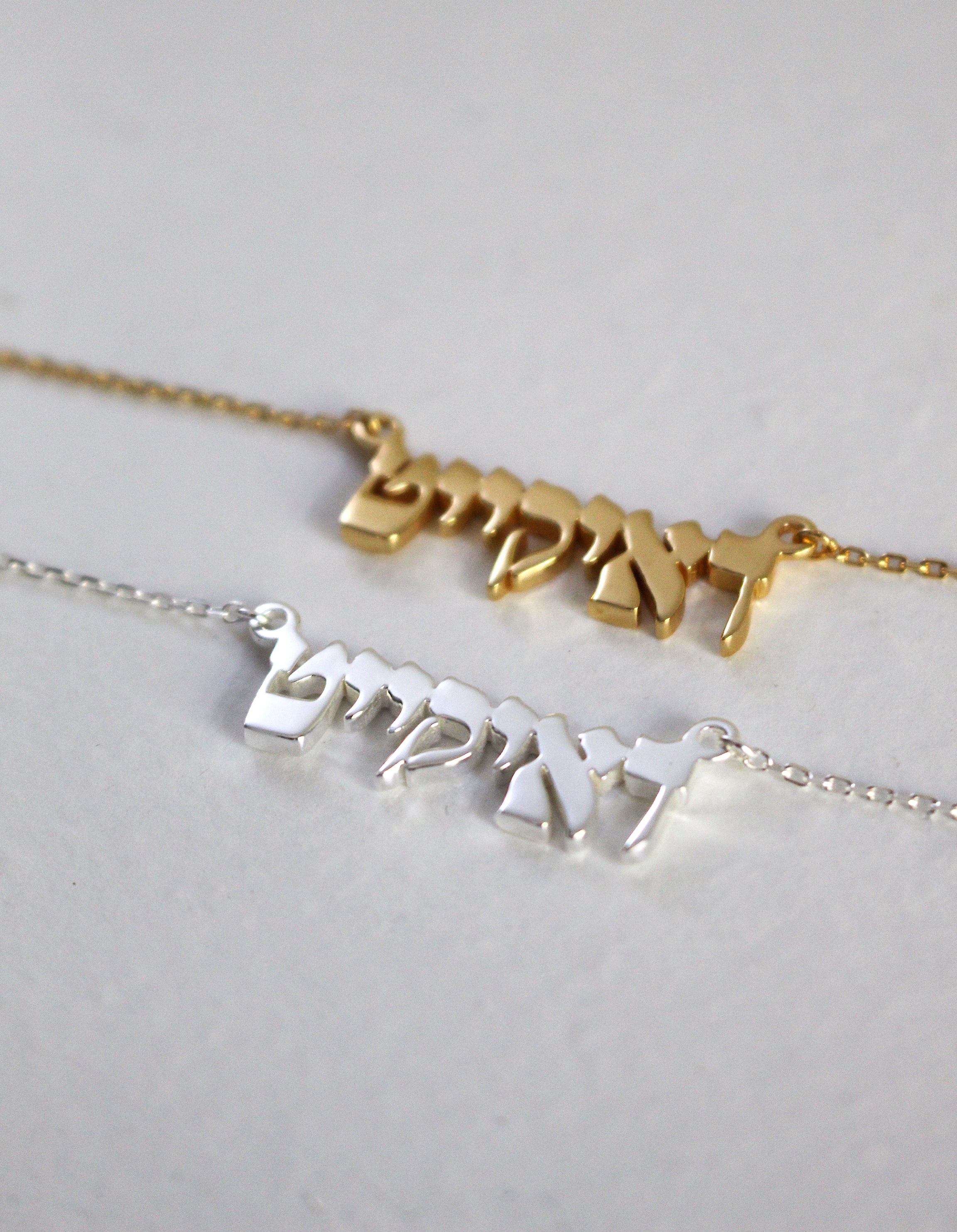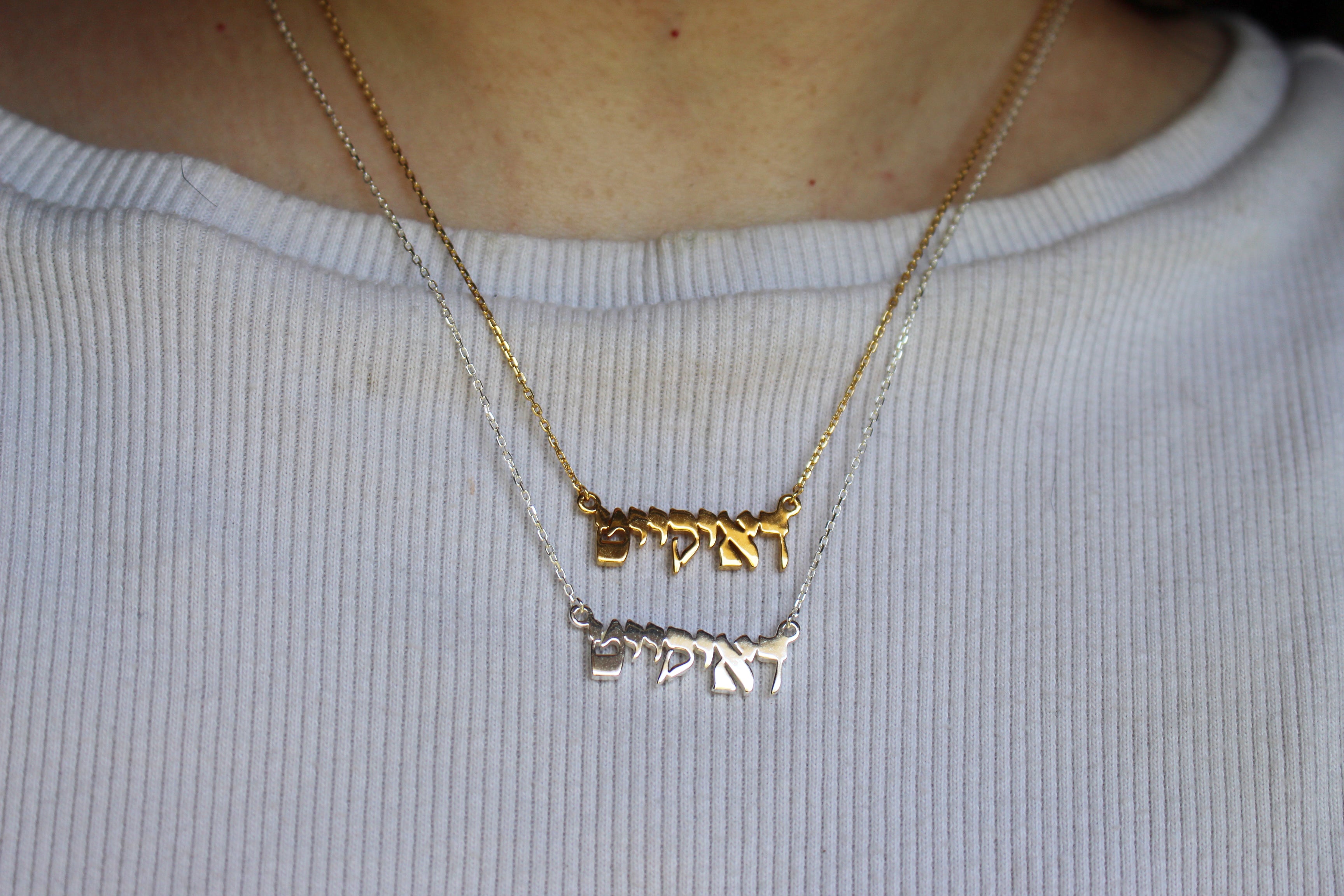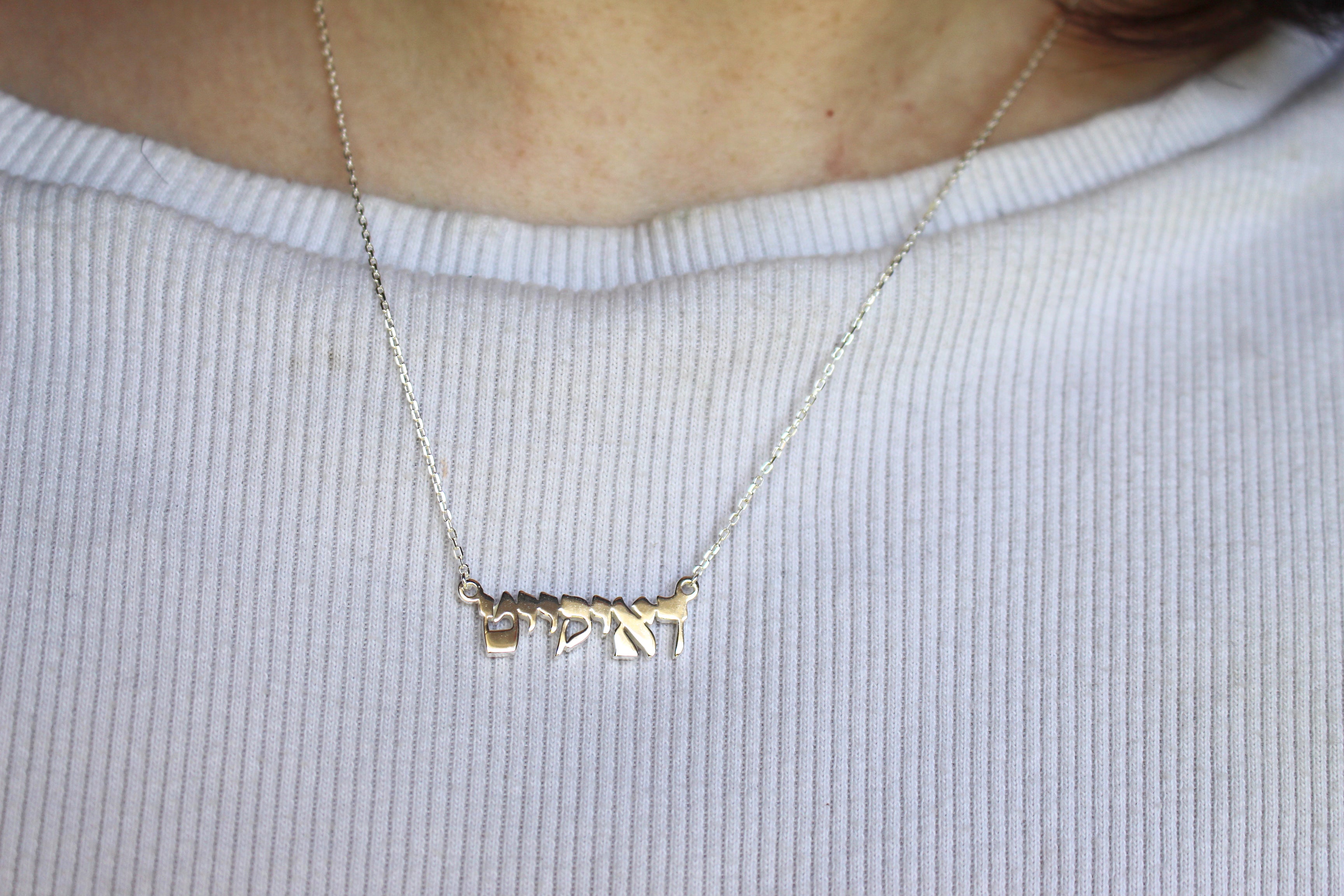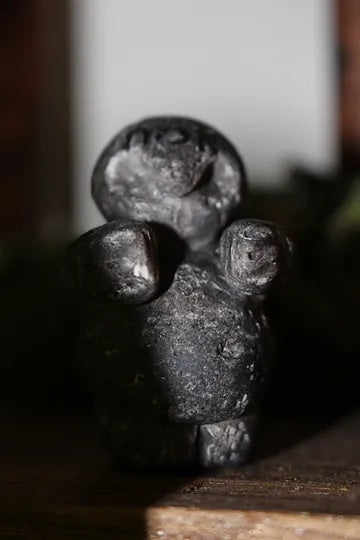A note before reading: very importantly, we are going to be discussing certain methodologies of creating a golem. None of the methods I describe or include are complete or would be easy for someone to replicate without complex, in-depth study, but it's important to state that the creation of golems is purely and uniquely Jewish, meaning it is part of a closed practice. If you are not Jewish, this is not something you should even consider attempting. Understanding that you are a guest in listening and learning about Judaism and our history, folklore, and beliefs means understanding that some things are not for you.
There is also an important note that part of the Jewish writings on this subject specifically discuss how Gentiles (non-Jews) would not be able to complete the creation of a golem as it is a uniquely Jewish practice.
What is a Golem?
The simple definition is that a golem is an anthropoid automaton, a creature made of clay brought to life using Jewish magic, or the sacred names of G-d. According to famed scholar Gershom Scholem, “The golem is a creature, particularly a human being, made in an artificial way by the virtue of a magic art, through the use of holy names”. The plural for golem in english is Golem or golems, while in Hebrew it is Glammim.
In Psalm 139:16 we see the word golmi used, meaning my golem. According to the Oxford English Dictionary, it means, “my light form", "raw" material, connoting the unfinished human being before God's eyes”. According to Etymology Online, however, a golem is an, “artificial man, automaton," 1897, from Hebrew golem "shapeless mass, embryo," from galam, meaning “wrapped up, folded." This etymological pathway is unsubstantiated elsewhere.
Purpose of the Golem
While keeping in mind the adage of 2 Jews, 3 opinion, most can agree that the general purpose of a golem is to protect Jews and our communities. They were usually created as a means of bringing Divinity to earth to save us from persecution and oppression as we lived in lands where we were foreigners.
History of the Golem
The history of the golem is a long one. There are theories that it is alluded to in scriptures, as we mentioned earlier in the discussion of etymology, but the specific basis of golems comes from the mystical text, the Sefer Yetzirah.
The Sefer Yetzirah is an influential book of the Ma’asei-Bereshit mystical tradition and was probably written between the 3rd and 6th centuries. It is also known as the Book of Creation or the Book of Formation. The book is traditionally believed to have been written by Avraham (Abraham), the patriarch of Judaism. Within its depths, the Sefer Yetzirah consists of commentary and teaches upon mystical concepts, particularly the ability to create lesser forms of life using the sacred names of G-d.
We see that in certain commentaries there are claims that historical Jewish figures also made glammim– for example, Abraham, and the prophet Jeremiah being two examples. It was also believed that in the Medieval ages, a man named Solomon Ibn Gabirol created a maidservant for himself, which is referenced numerous times in various scholarly discussions as a golem.
Story of the Golem of Prague
Perhaps the most famous story of the golem, the story of the Golem of Prague has many iterations. Wherever you heard it first, there are a few staples to the story: The Maharal of Prague, Rabbi Judah Loew ben Bezalel, creates a golem to protect the Jews of his city from the antisemitic attacks which plague them. When the golem is no longer needed to protect his community, he relieves the golem of its duties, laying him to rest. Some versions see the golem laying in wait in the attic of the old synagogue in Prague, waiting until it is needed to once again protect the Jews of the city.
Another story is that presented in the book The Golem Redux: From Prague to Post-Holocaust Fiction, by Elizaheth R. Rae. “The Jews in sixteenth century Prague's Jewish Quarter were continually under threat from members of the surrounding non-Jewish community who, using many pretexts, would invade the ghetto and wreak havoc. Often the pretext was that of the blood libel… After repeated depredations, according to the legend, Rabbi Judah Loew, a real historical figure and the wise High Rabbi of Prague, directs a dream question to God, asking for help to stop the violence. God instructs Rabbi Loew to go with two trusted assistants to the banks of the Vltava River that bisects Prague. In the dark of night, they are to use the mud of the riverbank to fashion a humanoid figure and then perform a secret ritual to infuse the figure with life. Rabbi Loew names the figure Joseph/Yossele and provides him with clothing. Rabbi Loew explains to the figure, now a golem and usually mute, that he will be a servant to the rabbi and do his bidding under all circumstances.
In the tales that follow his creation, the golem performs many feats of rescue and strength. Sometimes he patrols the streets of Prague at night; at other times he provides evidence regarding a Jew who has been arrested on blood libel charges so that the accused is exonerated. Eventually, either because the golem becomes destructive or because his heroic qualities are deemed no longer necessary, Rabbi Loew determines to withdraw his life, often in the attic of the Old-New Synagogue, the oldest operating synagogue in Europe. With his two assistants, Rabbi Low reverses the ritual with which he created the golem and life seeps out of him. In most versions, Rabbi Loew then covers the inert clay figure with an old tallit or pages from discarded Torah scrolls and forbids anyone to enter the synagogue attic thereafter.”
Methodologies
There is more than one way to make a golem. Generally, the golem is made of clay, or very rarely, stone. Infrequently, there are discussions of a framework made of wood or metal, but the most common formation is purely of clay. When made like this, they are formed like Adam was, from dust as part of the creation ritual. Then, the Divine names of G-d are used to bring it to life. The methodologies of doing this include writing down the Divine names on the “skin” of the golem or on a scroll that is placed within the body, normally the mouth, of the golem. One very common belief is to describe it with the word “emet”, or truth onto the forehead of golem in conjunction with other Divine names in the ritual of creation.
To quote from the Encyclopedia of Jewish Myth, Magic, and Mysticism by Rabbi Geoffrey W. Dennis, here is one methodology of creation.
“Whoever studies Sefer Yetzirah has to purify himself, don white robes. It is forbidden to study alone, but only in two's and three's, as it is written... and the beings they made in Haran, (Gen.12:5) and as it is written, two are better than one, (Eccl. 4:9).…. It is required that he take virgin soil from a place in the mountain where none has plowed. Then he shall knead the soil with living water and shall make a body and begin to permutate the alef-bet of 221 gates, each limb separately, each limb with the corresponding letter mentioned in Sefer Yetzirah….Afterward, he shall appoint bet and likewise gimel and each limb with the letter designated to it. He shall do this when he is pure. These are the 221 gates. Another method also requires a circle dance to be performed around the inert form of the creature. This procedure is meant to mimic the Midrashic description of how God created Adam. In the writings of Sefardic Kabbalist Abraham Abulafia, the golem creation process includes creating 24 magical/purposeful circles as well.”
The method of creation dictates the method of destruction in most legends. For those who carve “emet” into its forehead, erasing the letter alef would make the word “met”, meaning death, thereby erasing the efficacy of the original spell and commanding the creature to die. Others require you to take out the scroll, or some combination of both. Others recommend saying the Divine names in reverse.
Most golem stories end with the golem either serving its purpose and therefore being laid to rest, or the golem serving its purpose and then becoming violent against its creator after having served its purpose. Essentially, when it is no longer needed, it is not wise to keep one around.
Golems and Humanity
The concept of golems as not human, halachically, has also been greatly discussed. Something that is important to note is that in this idea of halakha, Jewish law, is many times interpreted as only pertaining to natural-born creatures. There is a story that (to paraphrase) on a specific day of the week, the tribes of Israel would be able to use the Divine names of G-d to create calves that were not born of parents, but merely brought into the world through, and for lack of a better word, magic. These magically created animals were therefore rendered as existing outside of the laws of kashrut and kosher slaughter. Specifically, you could eat these animals however you wanted and it wouldn’t matter: including the extremely forbidden act of eating the animal before it was dead. So, because it was not a natural-born creature, it is exempt from the Jewish law… This translates to the interpretation, from many scholars, that golem are also exempt from these laws. Now, in the story of the brothers eating of the calves that were created unnaturally, there is also a story of the brothers ‘walking’ with the same woman. To quote,
“The Talmudic legend supplied a way of explaining the quandary. According to the halakhic ruling, it is forbidden for close relatives, brothers, sons and fathers, to have intercourse with the same female. This interdiction was allegedly transgressed by the brothers, who "walked", an euphemism for having intercourse, with the same woman. However, provided it is not a human being, but merely an artificially created entity, the Halakhic interdiction does not hold in such a case. Implicitly, the assumption of the source quoted by Horwitz, or of Horwitz himself, is that the Golem cannot be considered a human being from the halakhic point of view. On the basis of this discussion of Horwitz, the female Golem was denied any human quality in a detailed halakhic treatment of R. Zevi Hirsh of Munkacs”.
So, in these discussions of sex with the golem, the problem was not even sex with the golem itself but the possibility of the breaking of law regarding incest.
However, in another version, there are multiple being created, so it was rendered a non-issue. Many rabbis of old stated that golems could not be created with sexual desire, nor should they be, as having sexual desire could cause harm if they were to choose to act on said desire. However, this isn’t the only discussion of the rights of golems nor their humanness.
You may have seen tweets saying that you could include a golem in a minyan, but that is not the consensus. Like all good Jewish topics, it is heavily debated.
Rabbi Isaac Ben Samson Katz argues that golems do not fall under the verse that states that “I shall be sanctified amidst the sons of Israel”, because they have no true parents, and are not born of humans, just as the calves we discussed earlier are not born of other cows and have no parents. We see this as different from women who are included under the rule of “I shall be sanctified amidst the sons of Israel”, by certain congregations, and are required to follow Jewish law. Golems, however, are not.
To quote from Rabbi Michael Leo Samuel 2012 article entitled, 'May a golem count towards a Minyan?'
“Rabbi Zvi Ashkanazi (1660-1718) writes in a responsa how his grandfather, Rabbi Elijah of Chelm, once made a golem in his garage. In this remarkable responsa, he asks whether (1) can a golem count as one of the ten who make a minyan or quorum for prayer? (2) If someone killed such an entity, would be considered a murderer? Each of these questions revolves around one basic question: could such a creature possess a human soul?
If the golem can be counted, does that mean that a golem may be considered as a Jew? Or does he have a gentile status? On the other hand, it is logical to say that the golem should be no worse than an adopted child, who is considered “Jewish.”
The rabbi wondered:
“Should it occur to you that a golem could have been counted for a minyan (or for that matter any occasion requiring a minyan), why would R. Zeira deliberately destroy it? It could only mean that the Golem is not considered a person, for otherwise Rava would have most certainly used him for a minyan! (I can hear him say, “Yo, golem, we need ya for a minyan!”)”
Here we see the answer that no: the golem may not count for a minyan. And that is an unfortunate conclusion that others come to as well.
Why can't it be counted for a minion?
Well, the reason that many rabbis give is that it is unable to speak. And this inability to speak comes from a cognitive inability. This goes back to the belief, as stated by texts dating back to the 13th century that to “there is a unanimous opinion that the operator is unable to show such faculty of rationality. Golems simply cannot be made by their masters to have a level of rationality. This rationality and intellect, however, is tied to the power of speech by many early scholars and kabbalists”.
I do want to make note that there are very important discussions to be held here regarding ableism and the way in which we view communication as purely vocal. We know that in this day and age, non-verbal communication is just as valid as verbal communication. Unfortunately, the rabbis of old did hold a number of damaging beliefs here that needed to be addressed before we moved forward.
To quote, R. Pinhas Eliyahu wrote that:
“As long as the power of the intellect does not illuminate the infant, he is mute, being unable to speak. And if a man will create a creature, a Golem, by the [divine] names and the holy letters mentioned in Sefer Yezirah, that Golem will have a figure with the appearance of a man shaped out of matter's having [even] a soul with all the powers and senses, but without [the power of] speech36, since he has no reason and his soul lacks the power of intellection, for man is unable to infuse an intellective soul and the power of procreation [koah ha-molid] but God alone, as we have explained in the book\ Beit ha-Yozer, which I have composed on Sefer Yezirah. And this was perceived by R. Zeira, concerning that man, that he is a Golem, as it is said in Sanhedrin: Rava created a man.”
Golems, Gender, and Sex
While the vast majority of golem stories depict the golem as masculine and use he/him pronouns for it, here are historical accounts of creations of golems that are considered to be female and stories of golems who fall within the realm of womanhood. In Golem, by Moshe Idel, we learn of some fairly outdated, frustratingly misogynistic viewpoints being held during conversations regarding golems, gender, and sex.
“In Hebrew, on the other hand, an unmarried woman was considered to be, like an unmarried man, an imperfect being, and she was referred to in classical texts as a Golem. This designation implies her being an imperfect, hylic entity, prior to her becoming a vessel (keli) for her husband, so that she will attain her essential perfection as woman. In light of our previous explanations of the meaning of the Golem, it seems that in this case as well the term stands for a human body that did not receive its ultimate perfection. Moreover, the relationship between the woman, conceived of as a Golem, and the process of her becoming a vessel, keli, namely her reaching her "natural" goal, is reminiscent of other Talmudic discussion where Golem stands for the unfinished form of a certain vessel, which becomes that vessel when it is given the final touch?. The penetration of the needle is paralleled by the Talmudic view of the husband as the maker of his spouse: bo'alaikh-'osaikh.”
This is but one extremely misogynistic viewpoint, albeit not uncommon within certain circles. Other circles see the creation of golems as completely genderless, the physical sex characteristics only given to the golem by its creator.
Spiritual Golems
There are other definitions and interpretations of the golem. In many interpretations of golems, their rituals of creation did not serve the inherent purpose of protection, but they were merely the byproduct of a set of rituals in order to achieve new mystical heights. This concept is especially espoused by Gershom Scholem, one of the scholars on the forefront of the study of Kabbalah.
To quote from the book, Golem, by Moshe Idel, "The study of the book [of Yezirah] was considered successful when the mystic attained the vision of the Golem, which was connected with a specific ritual of a remarkably ecstatic character… In his essay "Tradition and New Creation in the Ritual of the Kabbalists", he preferred two foci for the Golem ritual: "the oldest instructions for making a golem must be regarded as a theurgical ritual, in which the adept becomes aware of wielding a certain creative power ... these specifications for the making of a golem are . . . a description of a precise ritual, calculated to induce a very definite vision, namely a vision of the creative animation of the golem.
These spiritual experiences are still sought after to this day.
Golem in Popular Media
The golem is one of the most widely referenced Jewish creatures in non-Jewish media. There are many mentions, of course, so here are only a few—including the downfalls and victories of the portrayal in each one. We do have to remember that some do have Jews working behind the scenes while others very obviously do not. So, if I do not mention your favorite representation of a golem, forgive me
The first time I remember seeing a golem in non-Jewish media was in the book The Alchemist by Irish author Michael Scott. The book is part of the series The Secrets of the Immortal Nicholas Flamel, which does actually reference other things from Jewish folklore.
In this story, the golems are the henchmen of non-Jewish villain, Dr. John Dee [who was an actual occultist and scholar]. They have stones for eyes and are lumbering creatures of brute force. They have no free will and they are referred to as creatures of mud. When the scroll is plucked from one of the golems' mouths, it collapses back into a heap of mud.
Golems also appear in the popular game Minecraft. The villagers have long had a discussion surrounding them with the belief that they were created with antisemitic tropes in mind. The villagers, for context, are traders who trade with precious gems, have large noses, etc. This was largely due to the allegations of antisemitism against the game's creator. This was not helped when later in the game, golems were added to the game with the sole purpose of protecting the villagers–which only cemented in many’s minds that hate villagers were in fact meant to represent Jews. The golems in the game are not made of clay, which is an available resource, but of iron.
The Golem and the Jinni is a 2013 book written by Helene Wecker, a Jewish author, which features a golem named Chava as one of the protagonists.
The ever-popular game DND is fairly notorious for its butchering of cultural creatures, as well as some pretty nefarious bigotry, including anti-Romani racism, anti-Black racism, anti-Indigenous racism, anti-Asian racism, ableism, and antisemitism, to name a few. Golems in DND, as far as I could discern, are made of iron, stone, and clay. In DND, wizards and clerics can bring glammim to life. However, DND’s greater failures is in their desecration of glammim through “flesh golems”.
To quote DNDbeyond.com, “A flesh golem is a grisly assortment of humanoid body parts stitched and bolted together into a muscled brute imbued with formidable strength. Powerful enchantments protect it, deflecting spells and all but the most potent weapons.”
A failure of intense proportions, the creations of one of these creatures directly break Judaism's laws regarding honoring the dead, including dead bodies. Taking apart and creating a new body by way of stitching it together would be massively disrespectful to the dead and wouldn’t be done by Jews, which is why it is done, in this game, by wizards and clerics. These flesh golems get the basics right by saying that they can understand their creators but not speak, but that’s not much in the way of rectifying the egregious mistake of creating such a creature in the first place.
One of the most egregious representations of a golem, in my opinion, is that of Supernatural. While the creature itself is fairly standard, they add the belief that the “owner” of the golem writes their name on the scroll in the golem's mouth, and they fail the basic premise by following a storyline that contains a Nazi occultist teaching the grandson of a Rabbi how to control said golem. This storyline decimates and disparages the purpose of the creation of a golem for the protection of Jews, fails to recognize how creating and dealing with a golem is a uniquely Jewish practice by handing the control over to a literal Nazi [the character literally being a Nazi necromancer alive during the 1940’s], and then having said Nazi teach a Jew how to control a golem. It is, frankly, unbearable to watch.
It is a lesson in how cultural sensitivity is vital when creating media and how supernatural creatures are more than just a fantasy. They represent more than simple enjoyment to the cultures they originate within–and are not to be made into enjoyment for the masses at the expense and demeaning of the original culture.
There are many more depictions within modern media, but I will not cover them all.
The adorable golem figurine is created by Ezra Rose.

Sources:
Golem by Moshe Idel
The encyclopedia of Jewish myth, magic, & mysticism,
MyJewishlearning.com golem
Jewish Archive golem entry
https://www.sdjewishworld.com/2012/05/01/may-a-golem-count-towards-a-minyan/






